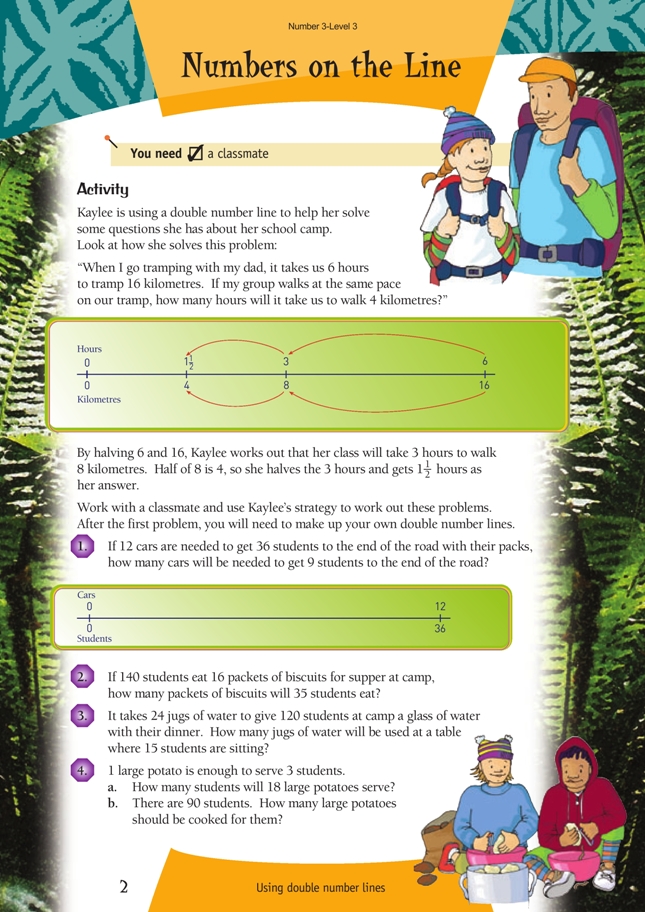This is a level 4 number activity from the Figure It Out series. It relates to Stage 7 of the Number Framework.
A PDF of the student activity is included.
Click on the image to enlarge it. Click again to close. Download PDF (350 KB)
use double number lines to solve problems involving proportions
A classmate
For this activity, students need to use their basic addition, subtraction, multiplication, and division facts. They also need to know how to use a number line to solve proportion and ratio problems.
A double number line has a set of data placed above the line and a second set placed below. For example:
The explanation in the students’ book shows how Kaylee uses a double number line to compare the time it takes her and her father to tramp 16 kilometres with the time it takes a group to tramp 4 kilometres. Kaylee starts with.gif)
and uses a halving strategy to work out the in-between hours and kilometres.
In question 1, the basic number line is given, and the students have to use a strategy, possibly halving, to find the number of cars for 9 students. In this case, it is the bottom line, the number of students, that needs to be halved (18) and halved again (9) so that the corresponding halves on the top line (6 and 3) can be used to answer the question.
In questions 2, 3, and 4, the students have to make their own number lines and put the appropriate marks in the correct places to solve the problems.
Further discussion and investigation
You can extend this activity by creating further problems for the students to solve by imaging the number lines and marks to solve the problems mentally.
Alternatively, you could introduce problems that require the number lines to be extended so that numbers can be doubled rather than halved as they are placed along the line. For example:
“If tickets to the circus cost $15 for 3 people, how much would they cost for 24 people?”
Have the students make up some problems of their own that can be solved using a double number line. For example, they could find the amounts of ingredients needed if a recipe is made 4 or 6 times larger.
There are many class-based activities that use various ratios, such as the ratio of parents to students or buses to pupils. Use these as realistic problems for the students to solve using number lines
Answers to Activity
1. 3 cars. The double number line could look like this:
2. 4 packets of biscuits. A possible double number line is:
3. 3 jugs. A possible double number line is:
4. a. 54 students. (You could use halving and doubling instead of the double number line below. So 18 x 3 becomes 9 x 6 = 54.)
b. 30 potatoes. A possible double number line, useful for both answers, is:






